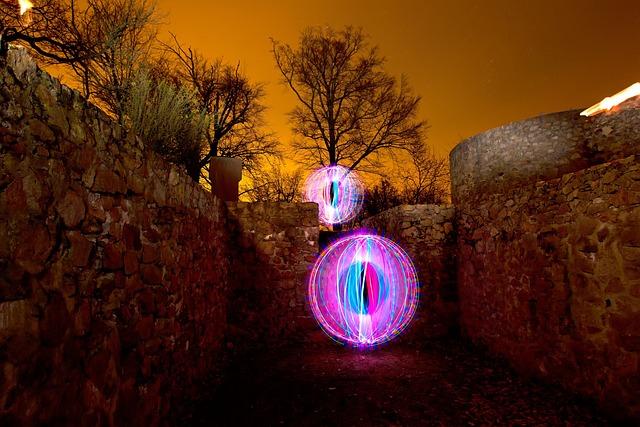In the flickering glow of a cinema screen, where explosions paint the sky and mythical creatures roam, a question lingers: should movies laden with heavy special effects still be revered as ”art”? As technology evolves, filmmakers wield digital brushes to craft worlds beyond imagination, blurring the lines between traditional artistry and technological wizardry. This exploration delves into the heart of cinema’s transformation, examining whether these visual spectacles enhance the artistic tapestry or merely dazzle with their digital prowess. Join us as we navigate this cinematic crossroads, where pixels and paintbrushes converge in the ever-evolving dialogue of art.
Crafting the Illusion: The Artistic Value of Special Effects
In the realm of cinema, special effects have transcended mere technical prowess to become a vital element of artistic expression. Through the lens of CGI That Made This Year's Sci-Fi Epic Possible”>visual storytelling, these effects craft immersive worlds and evoke emotions that might otherwise remain unreachable. Special effects are not just about explosions and fantastical creatures; they are a medium through which directors and artists paint their visions, allowing audiences to experience the impossible.
- Visual Storytelling: Special effects can transform abstract ideas into tangible experiences, creating a bridge between imagination and reality.
- Emotional Impact: The subtle use of effects can amplify emotional resonance, adding layers of depth to character arcs and narrative themes.
- Innovative Techniques: The constant evolution of technology offers filmmakers a palette of new tools to experiment with, pushing the boundaries of what cinema can achieve.
By seamlessly integrating these elements, special effects elevate films beyond mere entertainment, crafting an illusion that is as much an art form as traditional methods. They invite viewers to not only see but to feel, blurring the lines between the real and the fantastical in a dance of creativity and innovation.
Balancing Technology and Tradition in Filmmaking
In the ever-evolving world of filmmaking, the fusion of cutting-edge technology and time-honored traditions is more apparent than ever. As directors and producers harness the power of CGI and motion capture, the question arises: can these films still be classified as “art”? The answer lies in the delicate balance between innovation and authenticity.
- Storytelling: While special effects can elevate a film’s visual appeal, the core of cinema remains its narrative. Filmmakers who integrate technology without overshadowing the story uphold the essence of artistic expression.
- Craftsmanship: Traditional techniques, such as practical effects and set design, still play a vital role. When blended with modern technology, they can create immersive worlds that resonate emotionally with audiences.
- Vision: A director’s vision, whether realized through digital or practical means, is the heart of the artistic process. It’s the unique perspective and creativity that define a film as art, not merely the tools used to create it.
Ultimately, the artistry in filmmaking is not diminished by technology; rather, it’s redefined. The challenge lies in maintaining a harmony that honors both the past and the present, ensuring that movies remain a vibrant form of artistic expression.

The Director’s Canvas: Visual Effects as Storytelling Tools
In the realm of cinema, visual effects have emerged as potent storytelling instruments that extend beyond mere spectacle. They allow directors to weave intricate narratives and evoke profound emotions, creating worlds that challenge the limits of imagination. By utilizing CGI and other advanced technologies, filmmakers can craft scenes that resonate on a deeply emotional level, transforming abstract concepts into tangible experiences.
- World-Building: Through meticulous design, effects artists construct universes that enhance narrative depth, offering audiences immersive journeys.
- Emotional Impact: Visual effects can amplify the emotional stakes, making fantastical elements relatable and impactful.
- Symbolism: Directors often employ effects to symbolize themes or character arcs, providing layers of meaning that enrich the story.
By harnessing these tools, filmmakers not only entertain but also challenge perceptions of what art can be. The seamless integration of effects with storytelling invites viewers to engage with narratives in innovative ways, redefining the artistic potential of modern cinema.

Preserving Artistic Integrity in the Age of CGI
In the cinematic landscape where technology intertwines with creativity, the role of CGI has become both a tool and a challenge. While traditionalists may argue that digital effects dilute the purity of cinema, others view CGI as a new brushstroke on the artist’s canvas. The key lies in maintaining a balance where technology enhances rather than overshadows the narrative and emotional core of a film.
- Story-Driven Effects: CGI should serve the story, not the other way around. When effects are integrated seamlessly, they can amplify the narrative, transporting audiences to worlds beyond imagination.
- Creative Collaboration: Directors, artists, and CGI specialists must work in harmony, ensuring that each frame resonates with intention and authenticity.
- Maintaining Human Touch: Despite technological advancements, preserving the human element—whether through performance capture or expressive animation—remains essential to artistic integrity.
Ultimately, the question of whether films with heavy CGI should be considered “art” invites us to redefine our understanding of creativity. By embracing technology as a partner in storytelling, filmmakers can push boundaries while staying true to the essence of artistic expression.

